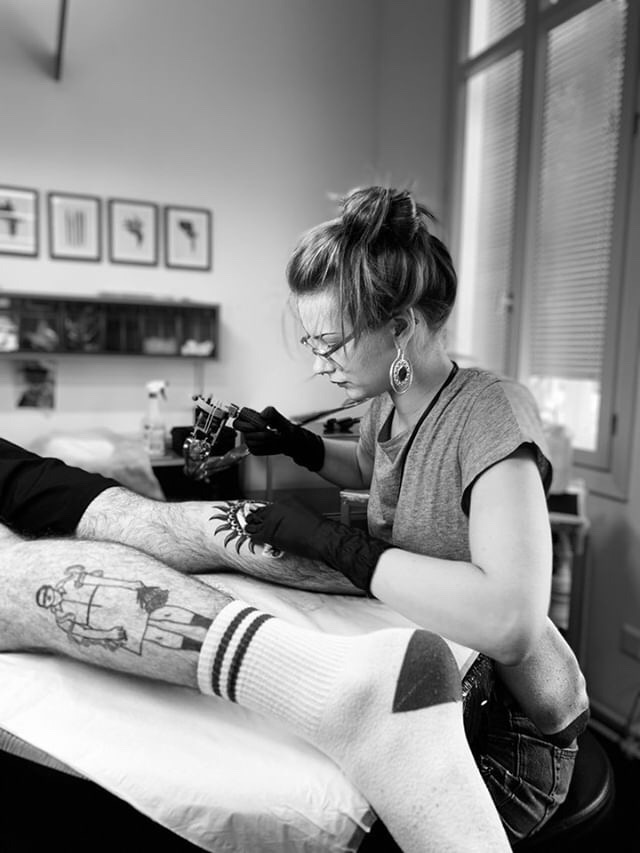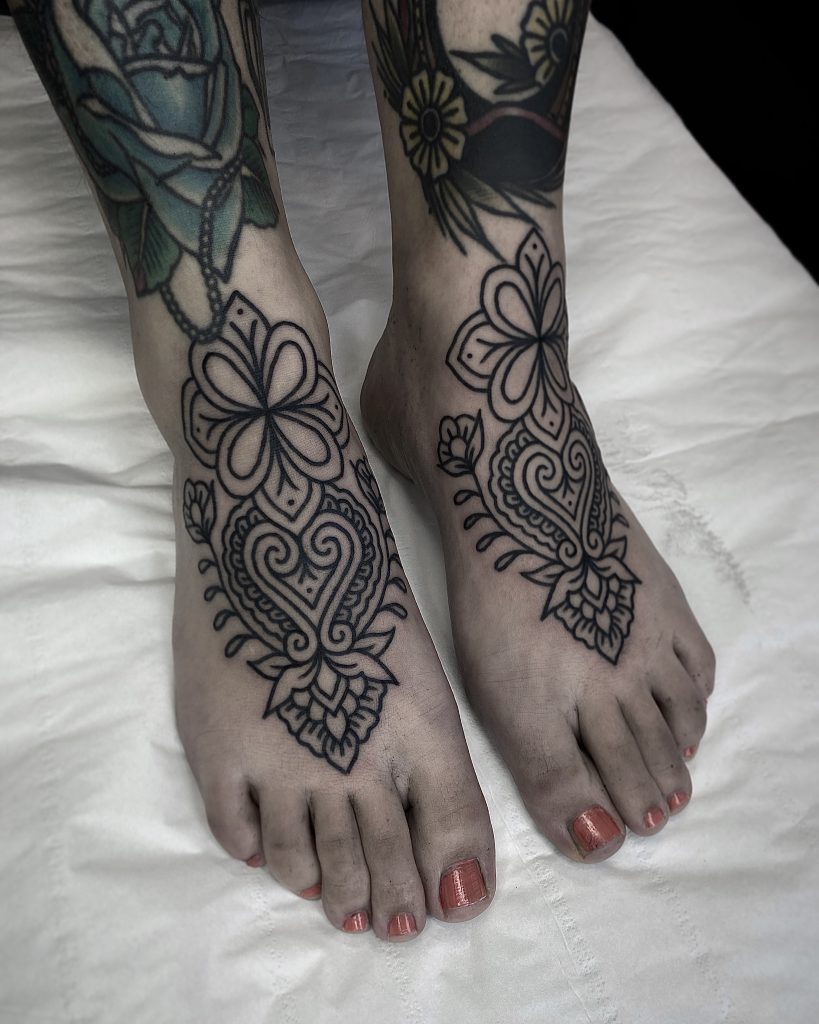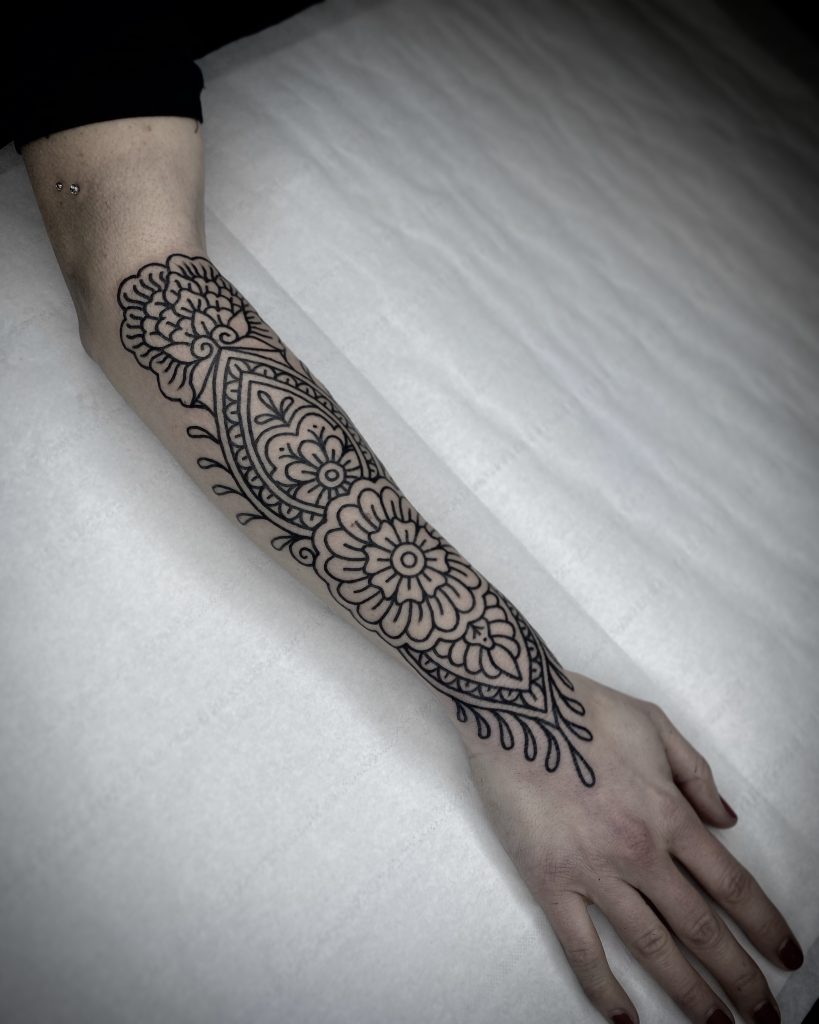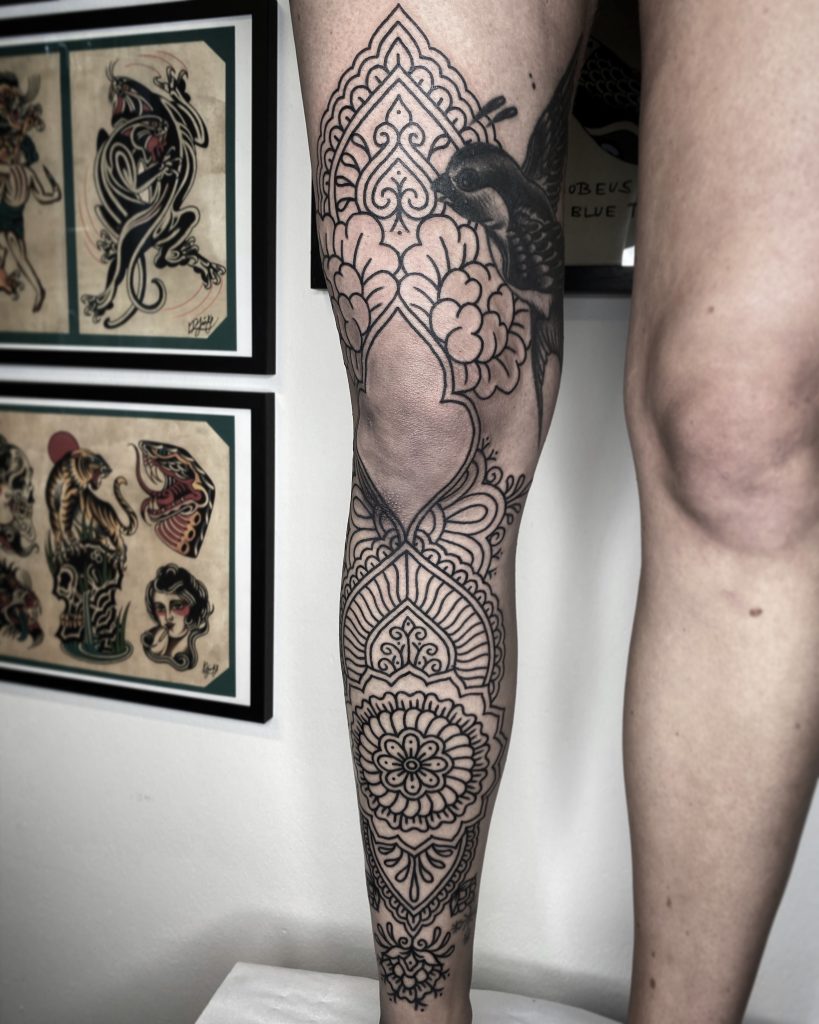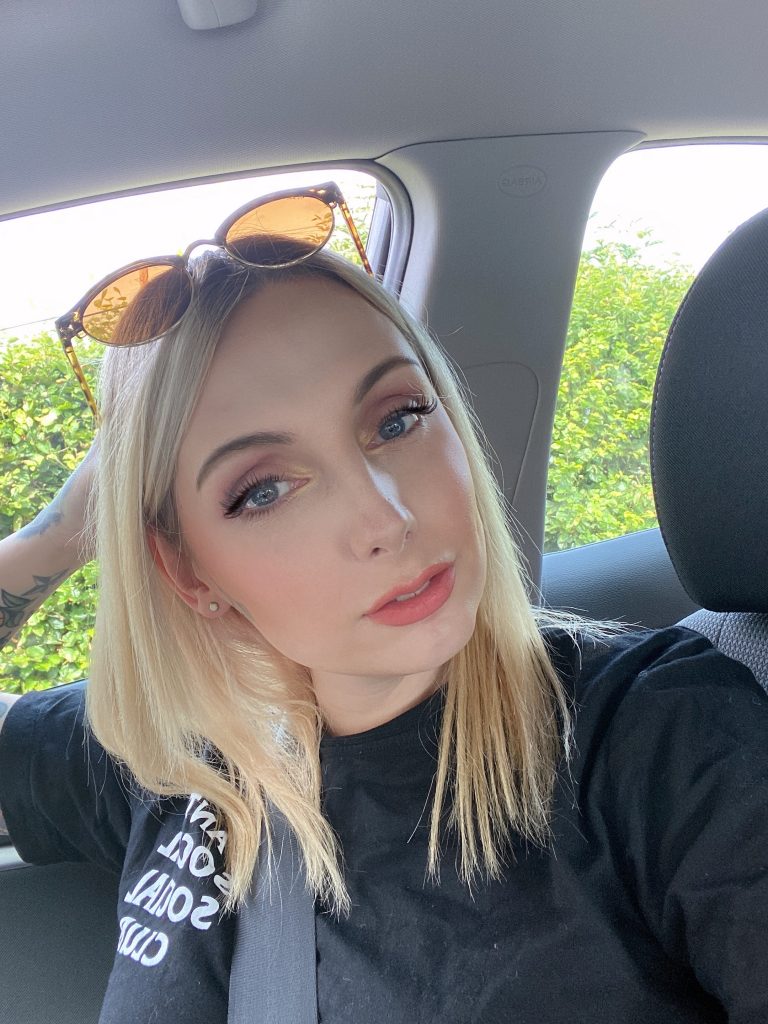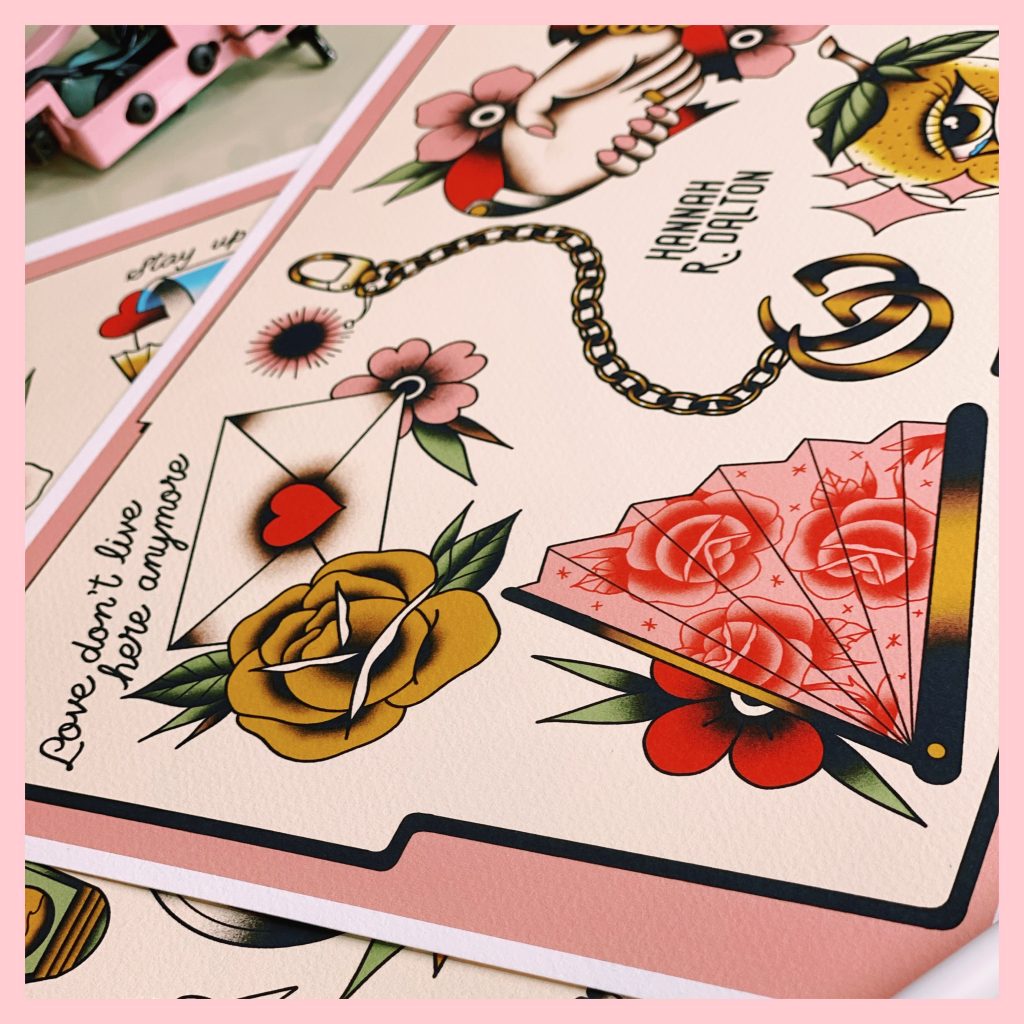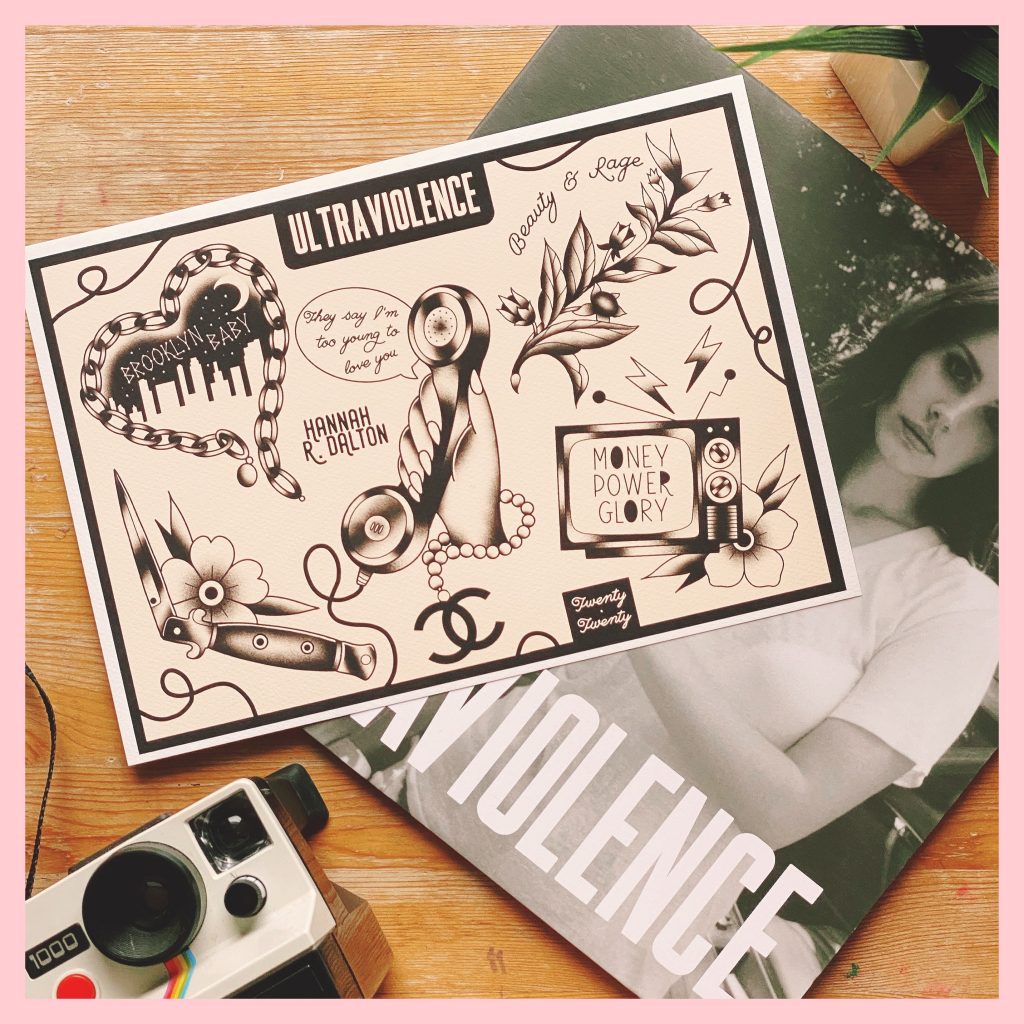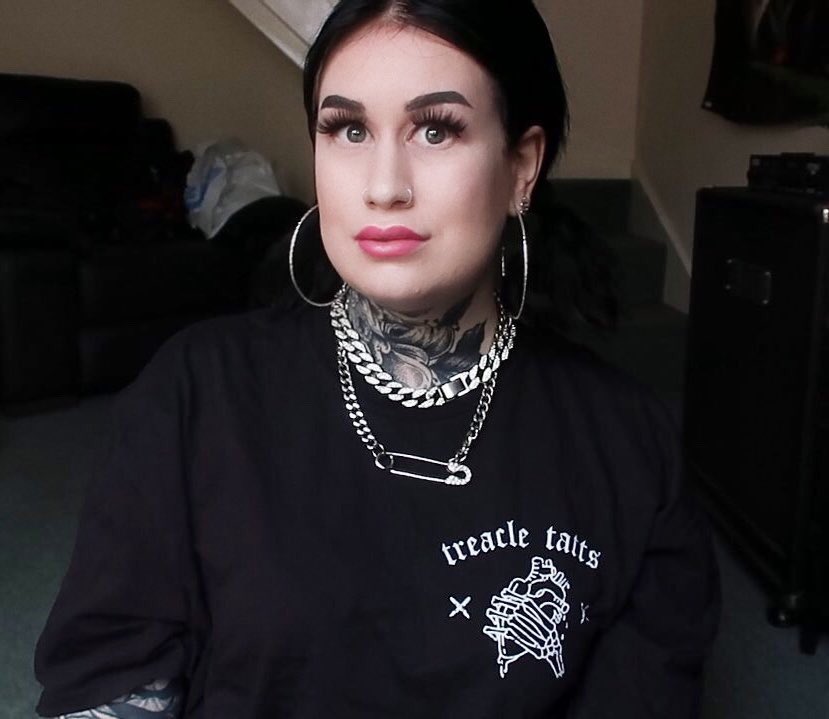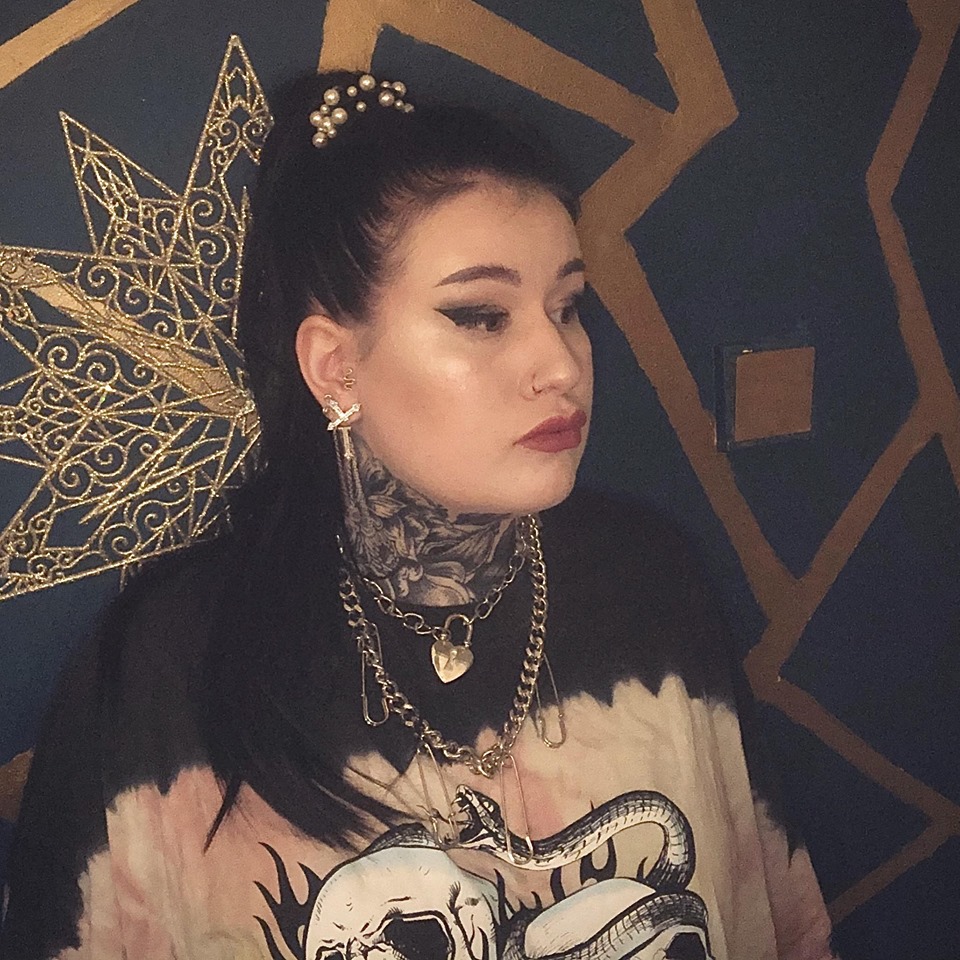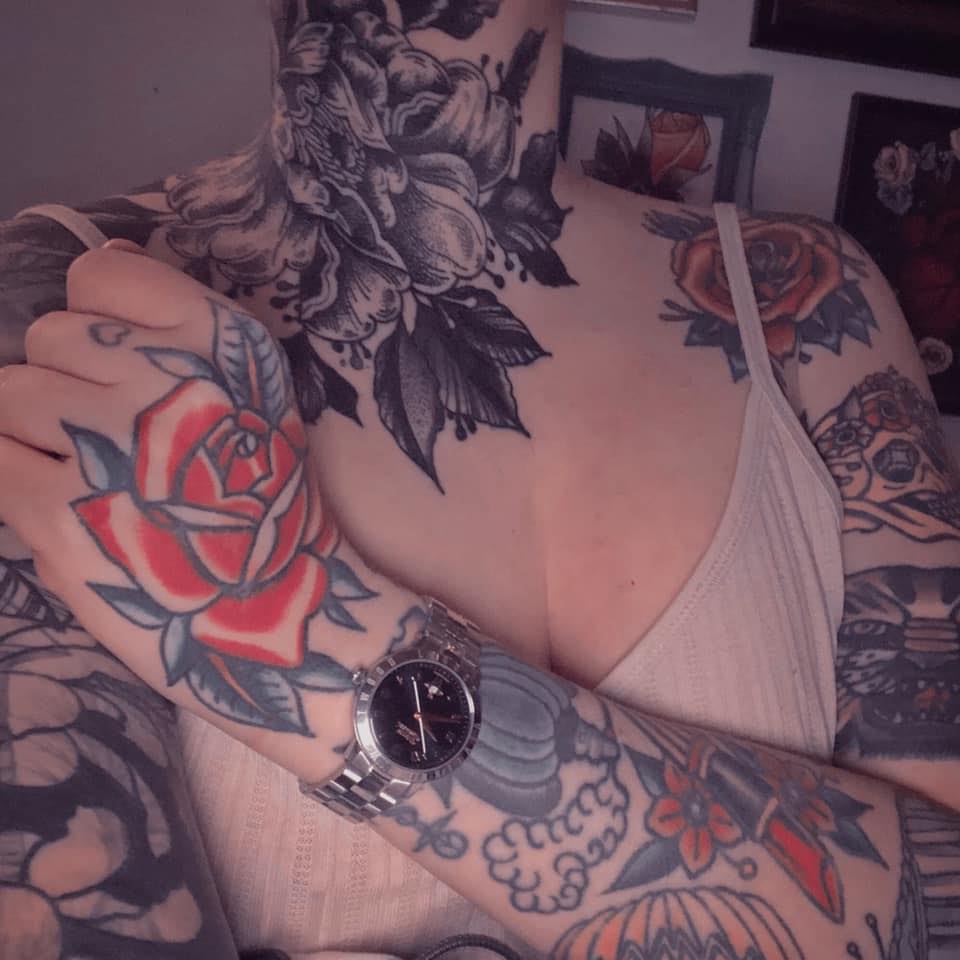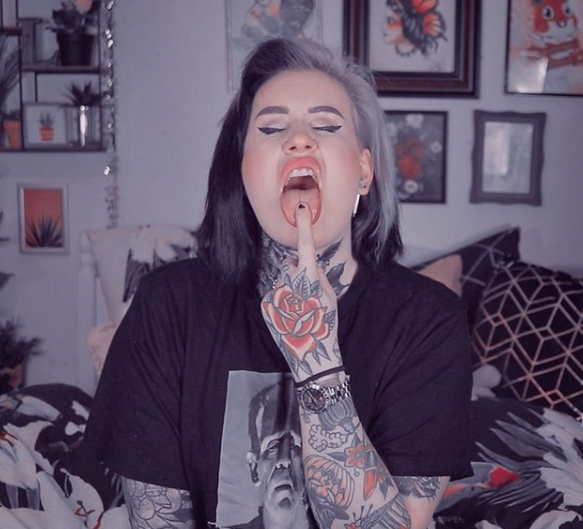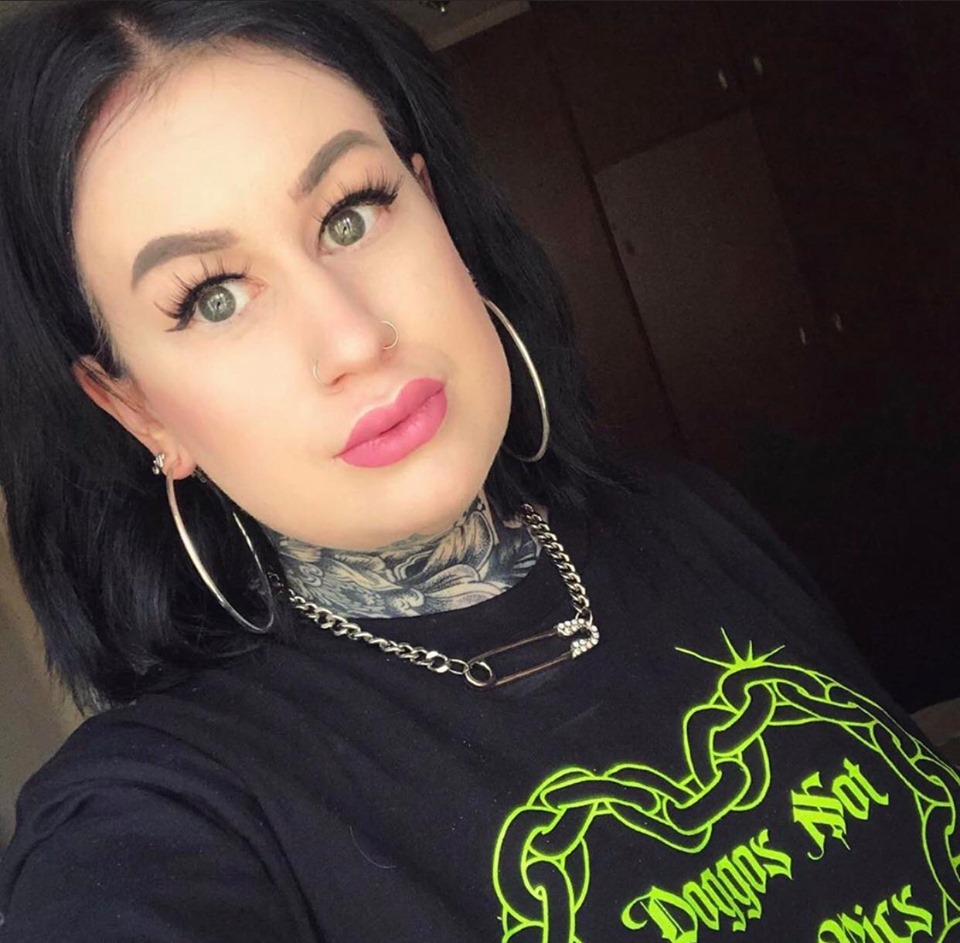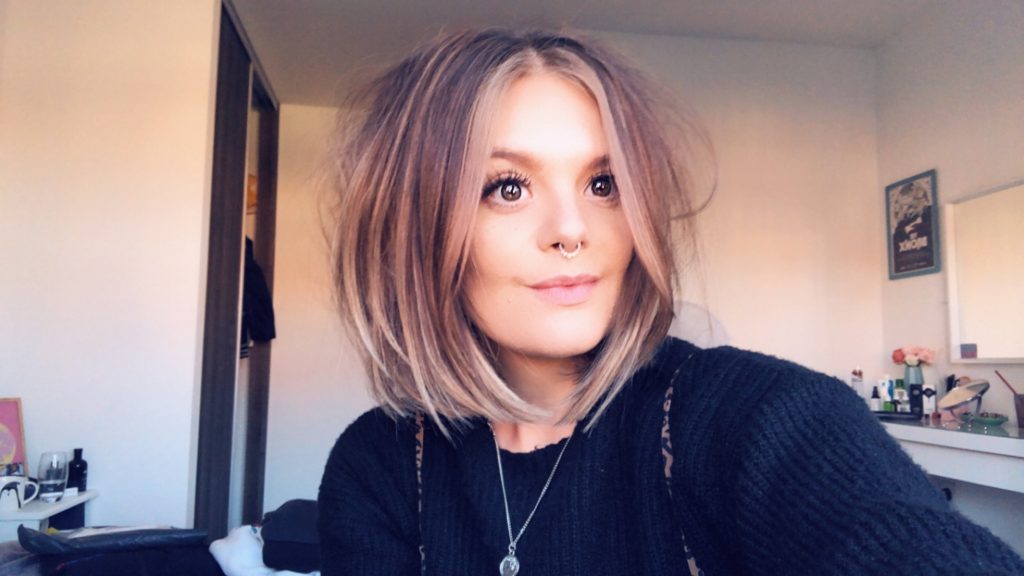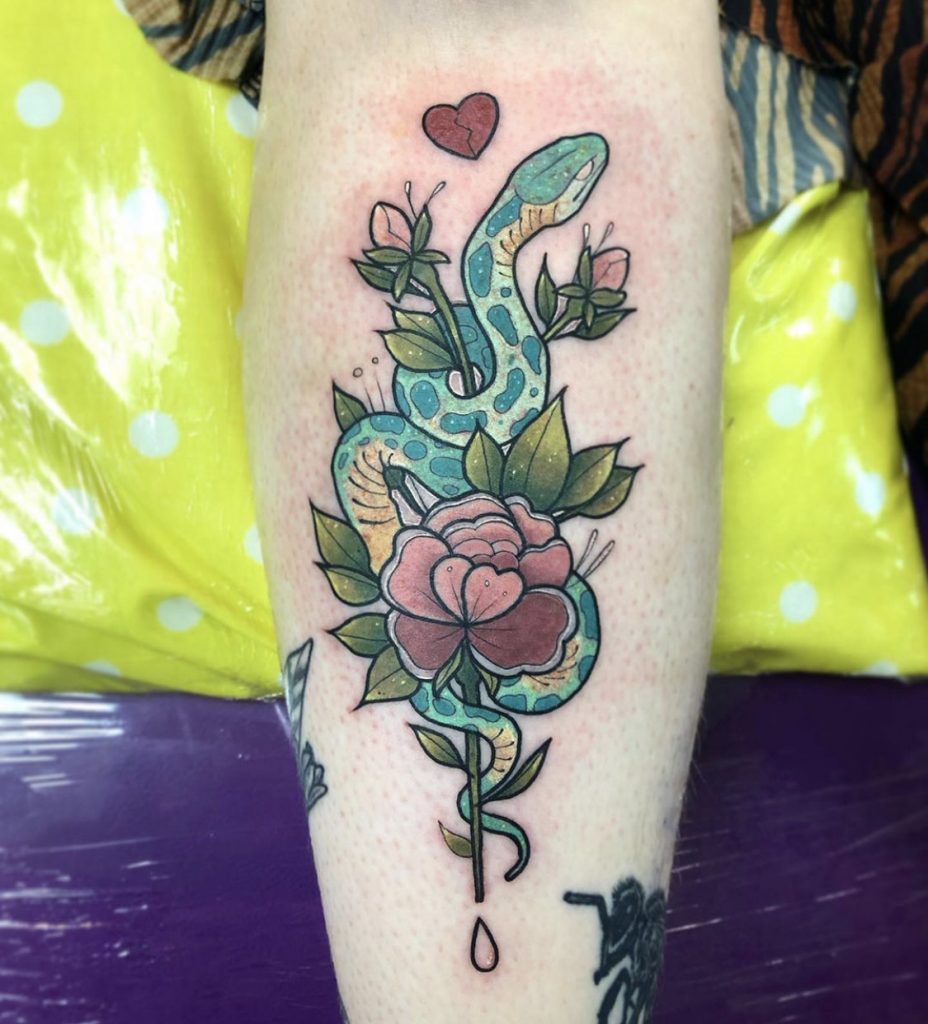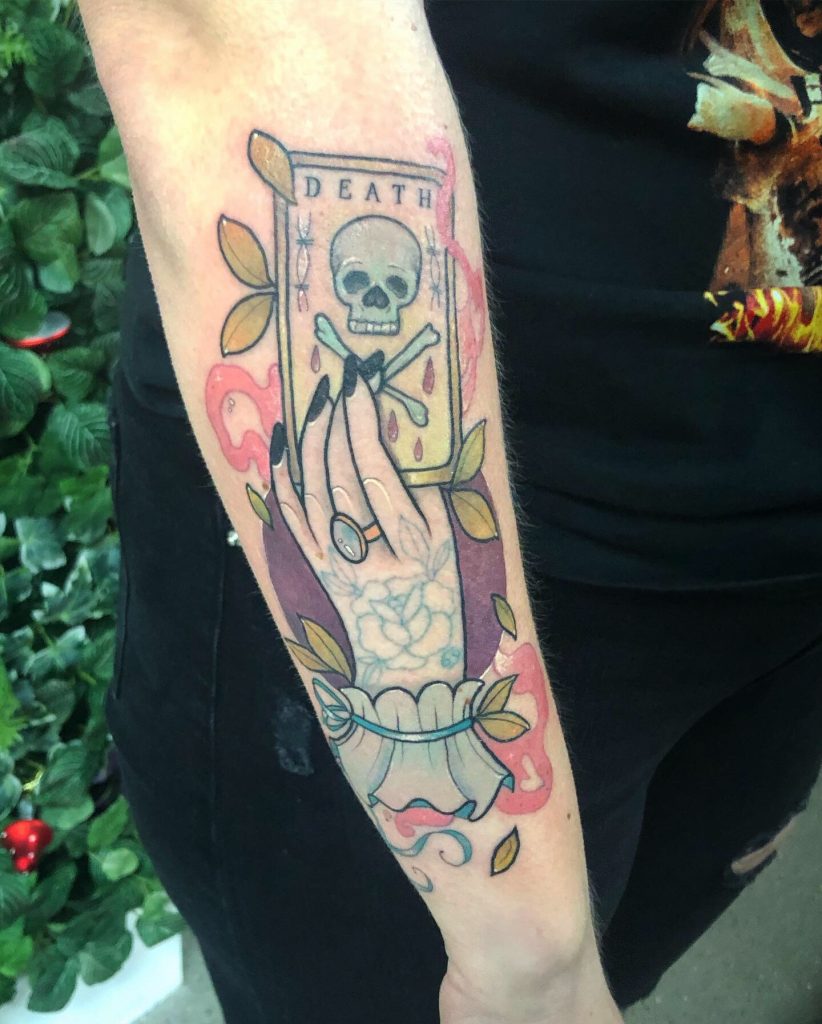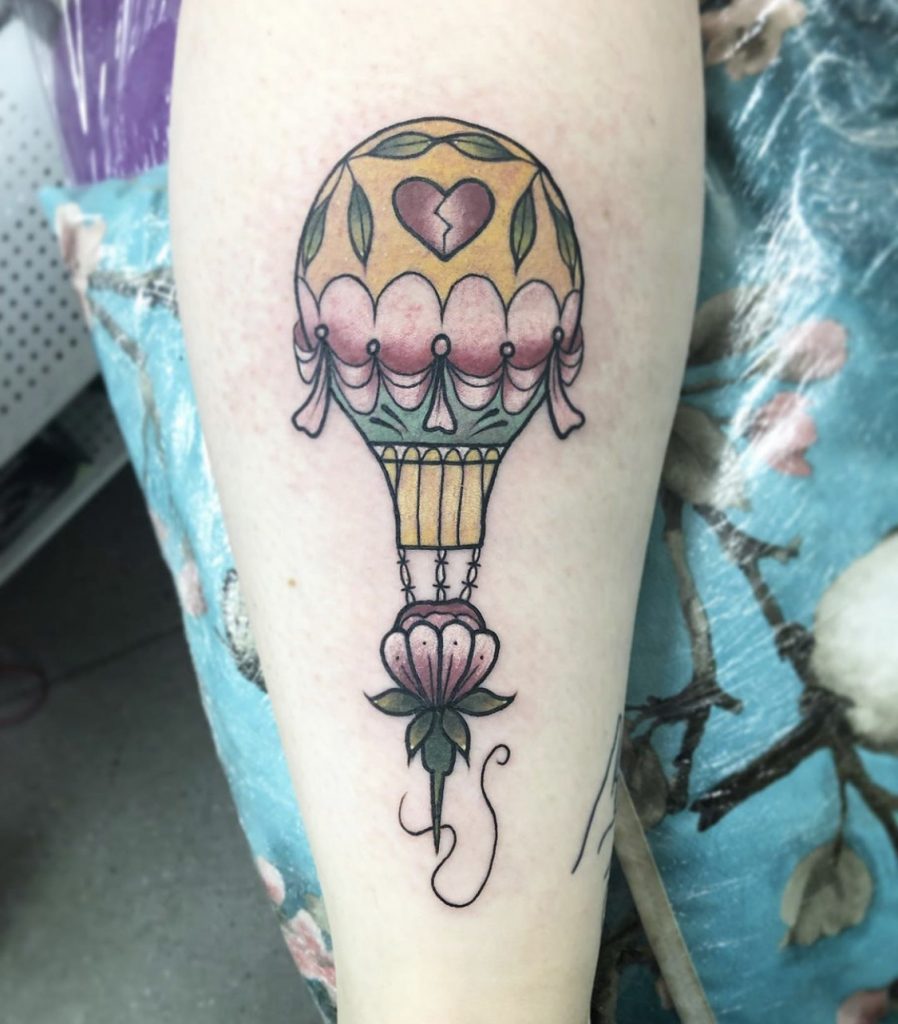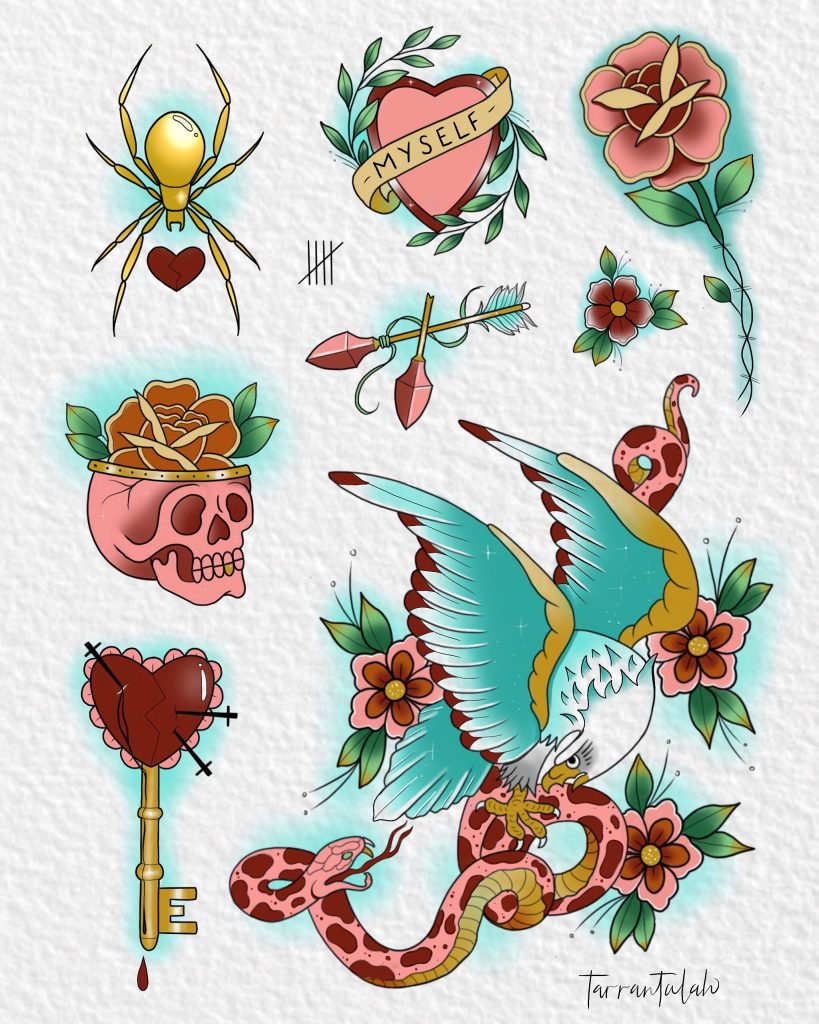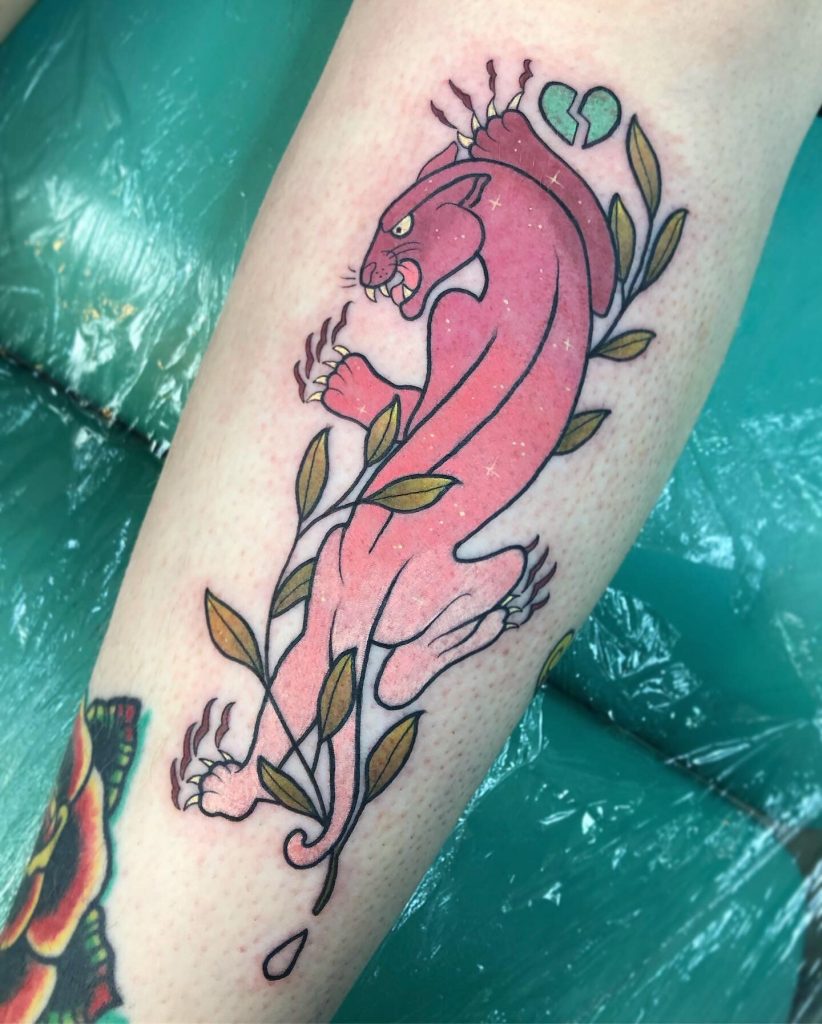Hayley, the Kiwi in Derby-based Kiwi and the Bear, chatted to us about running a “weird little colourful indie biz” with husband, Aaron (Bear). K&TB started as a hobby back in 2015, they now sell art prints, reusable face pads, scrunchies, pin pennants and more…
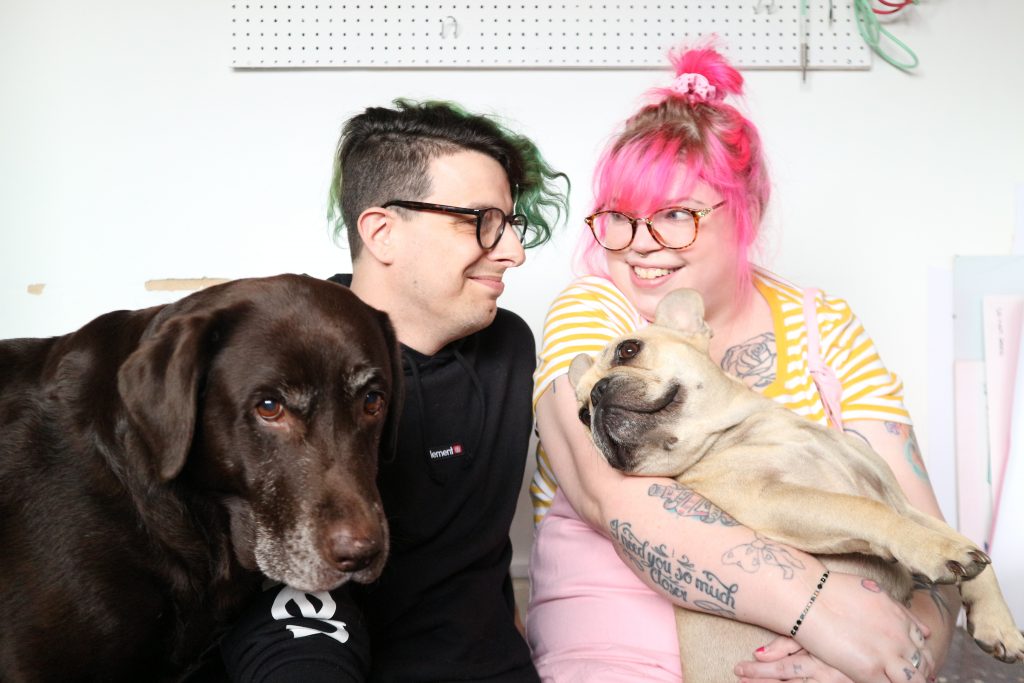
I’ve always been a craft lover and loved trying new things until something finally stuck which turned out to be tie-dye. After I spent a couple of months tie-dying everything in sight, I wanted to take it a step further by adding artwork to the dyed fabric, so I taught myself to hand embroider. What followed was a wall full of embroidery hoops containing tie-dye and 2005 emo lyrics with a little bit of Taylor Swift thrown in, somehow that Taylor Swift hoop made its way onto Buzzfeed and shortly after onto her legal team so that hoop was swiftly retired.
Around this time we invested in an iPad Pro and an Apple Pencil, this right here was the game changing moment for me, I just didn’t know it yet. I started to drift over onto a blank canvas and began playing around with little doodles and eventually adding more art to my lettering which, was weird for me as drawing just wasn’t something I ever did – like, at all.
I didn’t study art, I didn’t consider myself artistic – crafty yes but artsy not at all. At this point I had been following tattoo artists and illustrators on IG that I found so much inspiration in and it had never occurred to me that I could add my voice via my own artwork to the community. I was so nervous about putting my illustrations out into the world, I thought people would think it was a joke.
It was discovering the incredible creative community on IG that taught me art was whatever I wanted it to be and it could mean whatever I wanted it to mean to me, and suddenly I was free to just create. I was having the most fun and finally felt that feeling of being somewhere you were supposed to be the whole time.
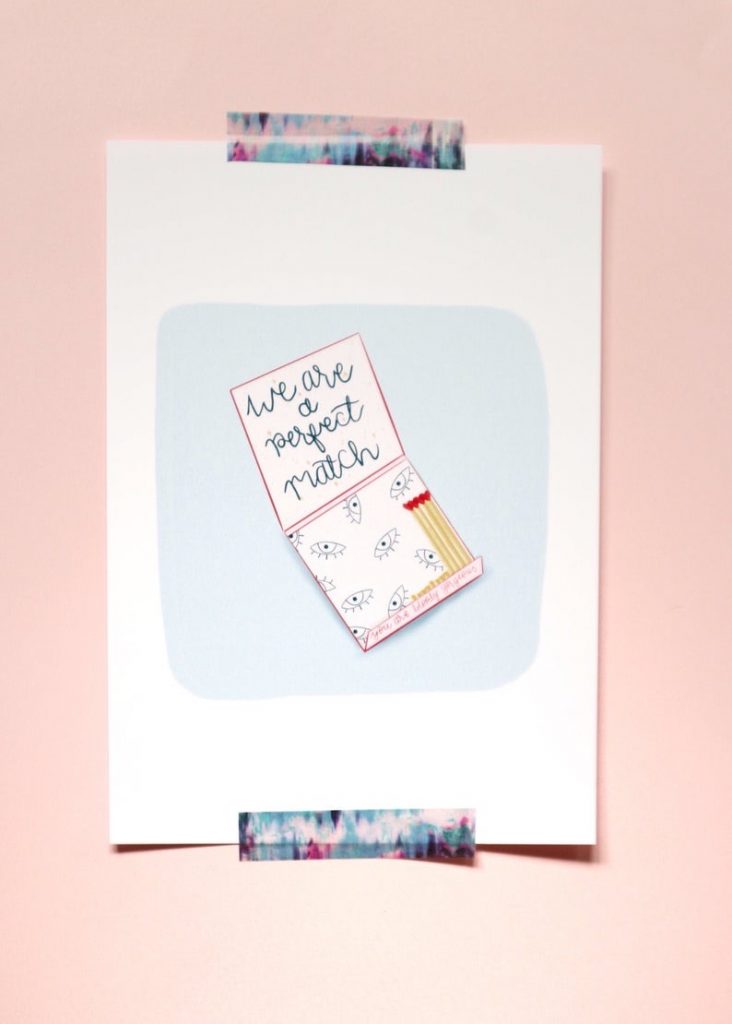
So in 2018 we decided to take Kiwi and the Bear a little more seriously, we wanted it to feel more like a brand, something that really reflected who we are – a couple of weirdos trying to live life a little more positively while still remaining sarcastic and foul mouthed. We just wanted a space where we could really just be our obnoxious selves!
We made a few of my illustrations available to buy as prints alongside the embroidery hoops and it felt liberating, so new, so scary, but so exciting! We started developing more products using our hand dyed fabric, purely for selfish reasons as we were making things that we wanted in our own home. It’s selfish but it’s also the best way to find ‘your people’, those that love the same things as you, customers and friends and even better sometimes both!
Our new products and new direction came at the perfect time for us as I had to take a step back from hand embroidery due to my chronic illness making it near impossible to carry on. I’ve had juvenile rheumatoid arthritis since I was seven, two hip replacements and two shoulder replacements later, what hasn’t been replaced is painful and awkward and waiting to be replaced!
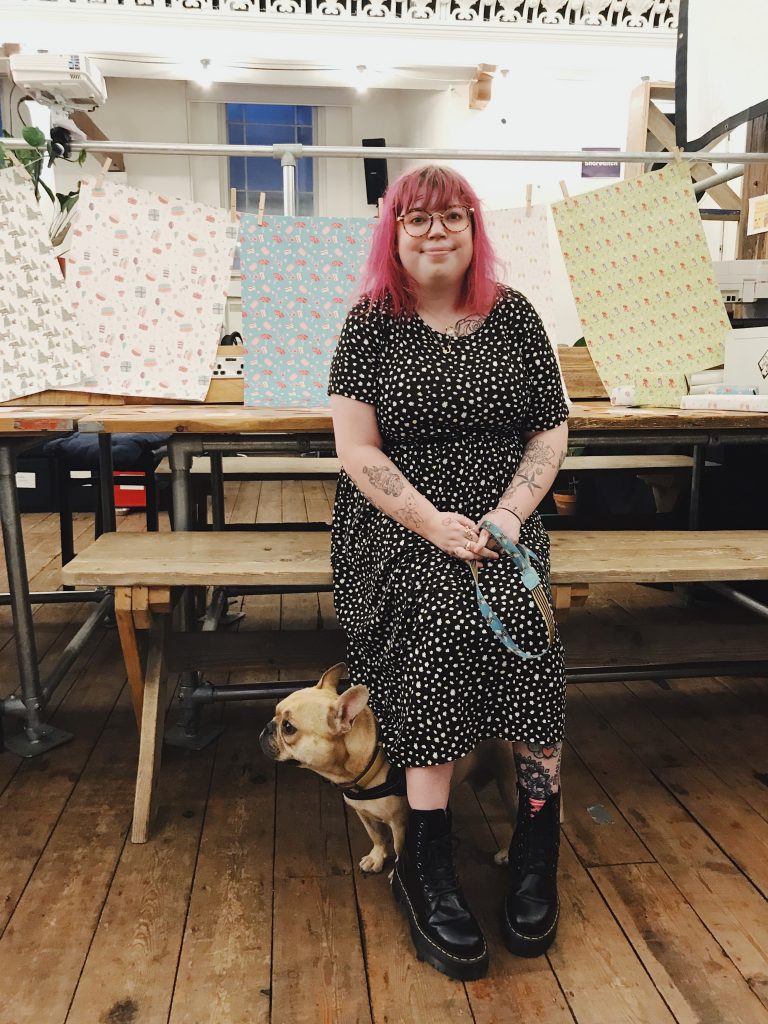
I dislocated my thumb while drying my hair, that’s all it took, they couldn’t get it back into place in A&E and soon after, I saw a specialist that showed me my x-ray, and explained that I actually had five chronic dislocations. I’d just learned to live with them. When you’ve been disabled since you were a kid you become really adaptable especially when you’re a stubborn Taurus, so when someone tells you that you can’t do something because of your disability you find ways around it. I couldn’t physically carry on with the hand embroidery, I was grateful we’d discovered things like our pennants and illustrations, so removing the hoops didn’t have to be the end for us, if anything it felt like the start of a new chapter and I found a way to keep drawing and making even with the dislocations.
When people realise I make and create what I do with my sad little hands they often don’t believe it, but for me it’s the most natural thing to keep going, stay positive and stay medicated. Plus, having a high pain threshold really helps. It also helps with really long tattoo sessions, I think nearly every tattoo artist I’ve spent time with has said that I sit like a rock, I mean come on I have to look for the positives in this disease right?
Positivity is a huge part of what we’re about as a brand, it’s strange to say as two emo kids in their 30s who almost always opt for black everything, but somewhere around my 30th birthday I wanted to be kinder to myself. Every day is a battle for my body so I really wanted to focus on the positive things, however small. It was around this time that I fell in love with colour which was super out of character for me, as the only place I ever had colour was my pink hair, but suddenly I was wearing bright fun dungarees and I realised I could be a colorful emo. I found my sweet spot and I’ve stayed here ever since.
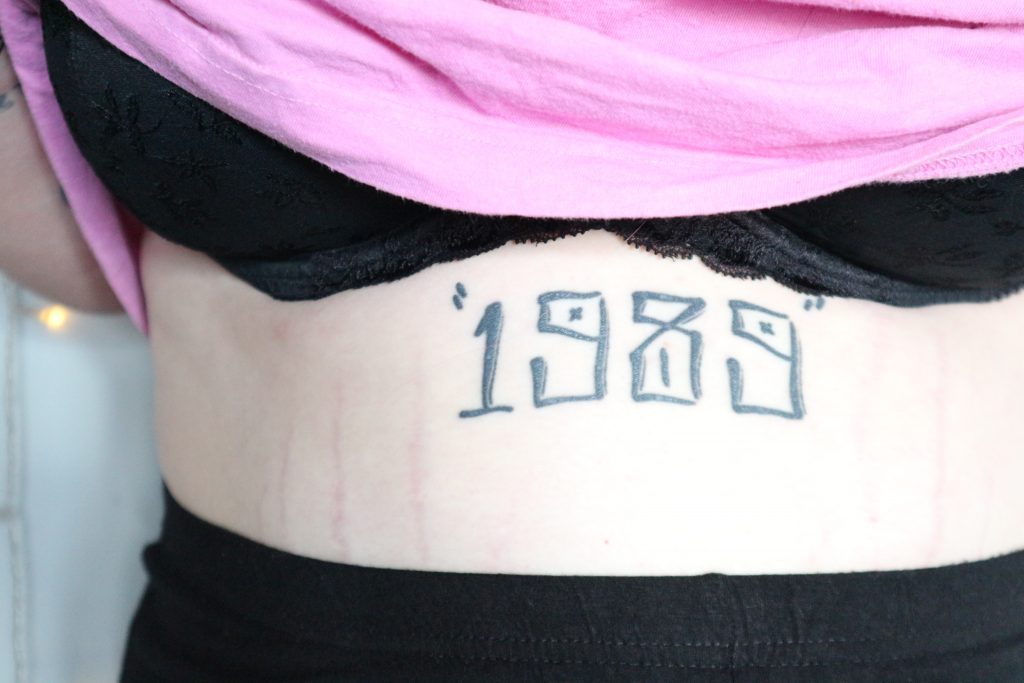
It was around my 30th birthday that I received one of my favourite tattoos, it was a real life changing moment for me, like real-life movie montage material of me coming out the other side a bad ass b!
For the longest time I had left gaps on my body that I was too afraid to get out in a tattoo studio, something switched in me when I turned 30, I learnt to love my body no matter what size it was, I learnt to separate the disease I hated from the body that housed it.
I made a tattoo appointment with Mike Love to get my first hand poke tattoo on my sternum, I was really, really testing my limits and I loved it. This piece is so important to me, it marks the beginning of a new era for myself, I faced my fears and got ‘1989’ hand poked into a space I never thought I’d be able to get tattooed, yes it’s my year of birth (I’m a proud 80s baby if only just clinging on to the very end of the 80s) but it’s also a nod to my favourite Swift album, and this one her legal team can’t take away.
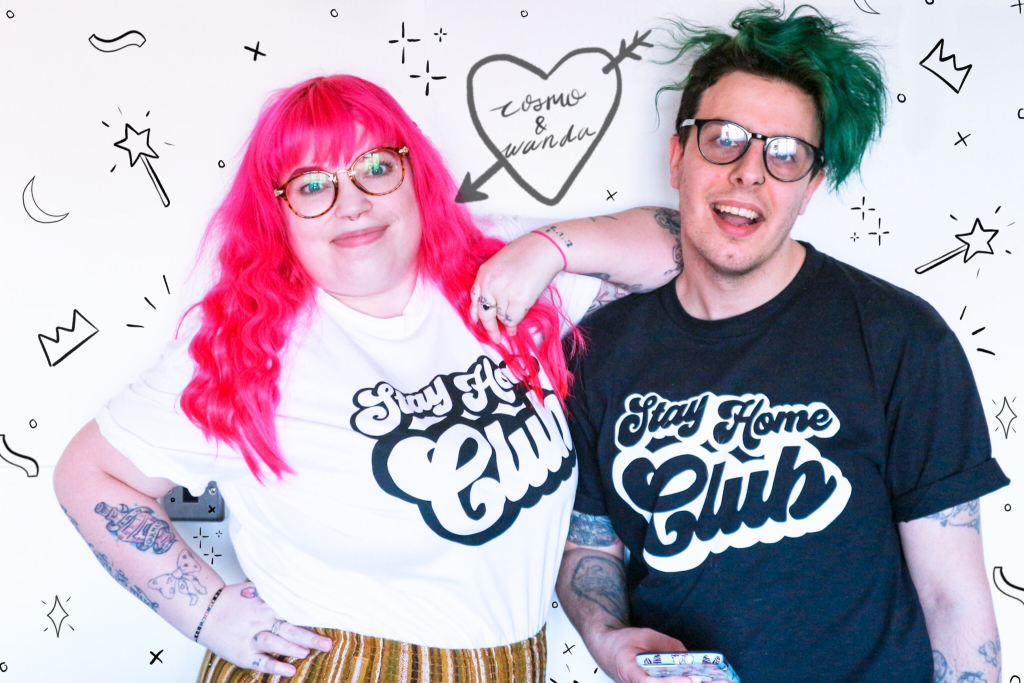
We have been a couple since I was 16 and Aaron was 17, so the longest stretch of our tattoo journeys do end up intertwining at times. We have a few “couple tattoos”, for instance he has “Player 1’ on his inner wrist and I have “Player 2”. We’re huge nerds and play video games together any chance we get, and after 15 years together it feels pretty safe to include our story on each other’s bodies. We do have plans for a couple of matching pieces that relate to our favourite Walt Disney World adventures together. During our trip last Halloween I got to show Ariel my Ariel piece and Aaron got to show Mary Poppins his bag and umbrella piece by Lady Chappell Tattoos, yeah we’re those kinda nerds too, and it was so freaking magical!
The one thing I’ll always thank younger me for was being obsessed with filling my arms leaving my legs bare for when I was more educated about the industry. So my legs are home to my most favourite pieces that I’ve collected through my 20s, my absolute favourite is my Rachel Baldwin piece.
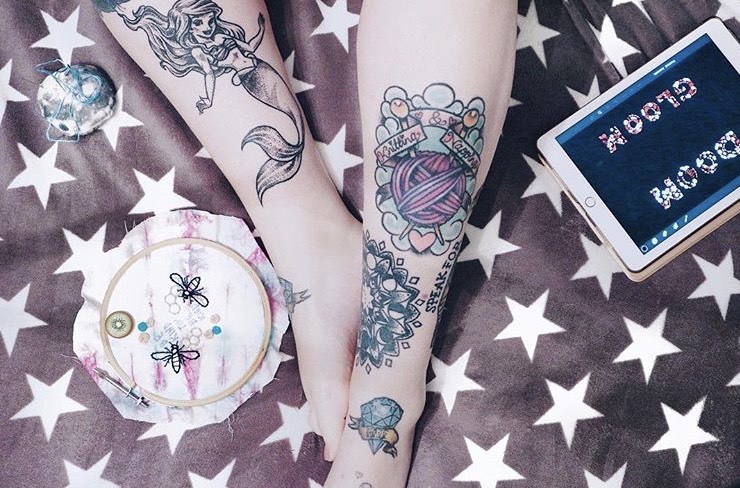
Tattoos have 100% had an effect on my relationship with my body, I began getting tattooed when I was underage (I know, I know!) I think as a sick kid this was to have some control over my body when I felt I had none.
Eventually getting grew into a way to love my body, my body art plays a huge part in my body confidence and I’m finally at a point of accepting that I’m like a colourful weird little marshmallow and proud.
Occasionally someone will ask why I describe myself as a marshmallow, it’s actually a kind of sneaky way to refer to myself as chubby (also fluffy, plump and pink it’s the actual food version of me). I don’t use it to replace chubby because I’m ashamed, because I’m not, it’s been a really long journey to dig who I am. I use it because when you refer to yourself as chubby or fat in a positive way, you’ll more than likely experience someone with good intentions trying to tell you you’re not fat. Most people have received an “omg you’re not fat babe” once in their chubby and proud lives, some people can’t see it as anything but a negative, so it’s easier for me to refer to myself as a “leel marshmallow” so I just get to live my fat and proud life. Also marshmallows are pretty dang cute and if just makes someone think of something pink and chubby well, duh, hello!
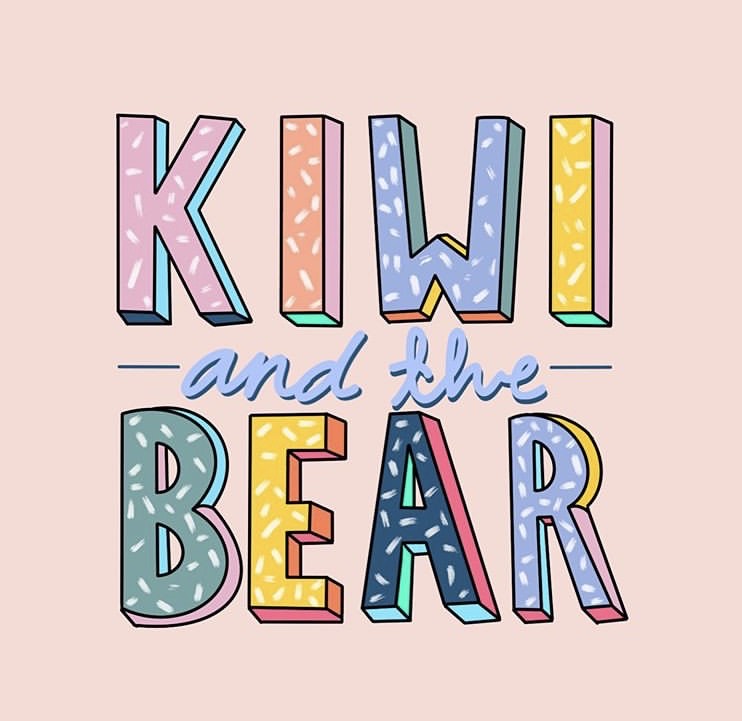
We have a lot of plans for the future of Kiwi and the Bear, firstly nap with the pups, then celebrate our 15 year anniversary that we worked through, AND then we want to keep adding new illustrations to the shop. We will still take commissions (hand lettering, illustration, custom dyed pennants) most things in the shop you can make a custom request on. I hope to be lucky enough to carry on doing freelance illustration for companies with the same values as us.
The biggest plan we have is to make a zine about being chronically ill which we started working on before everything was flipped upside down. There’s also talk about possibly releasing our first ever pin, which makes sense with our ever growing collection. Really we just aim to keep being a part of the community that we love and making the things we love while making new friends.
